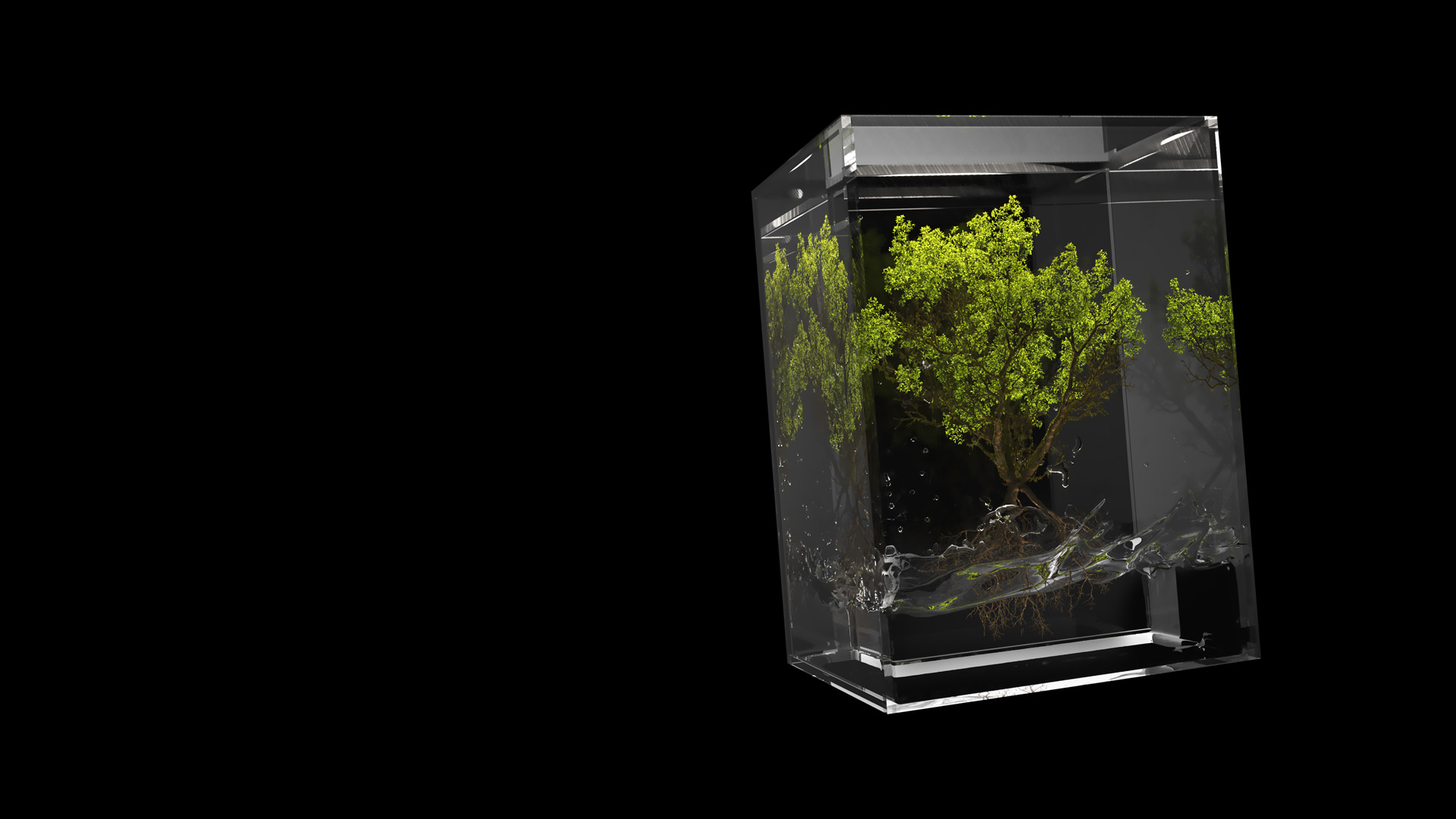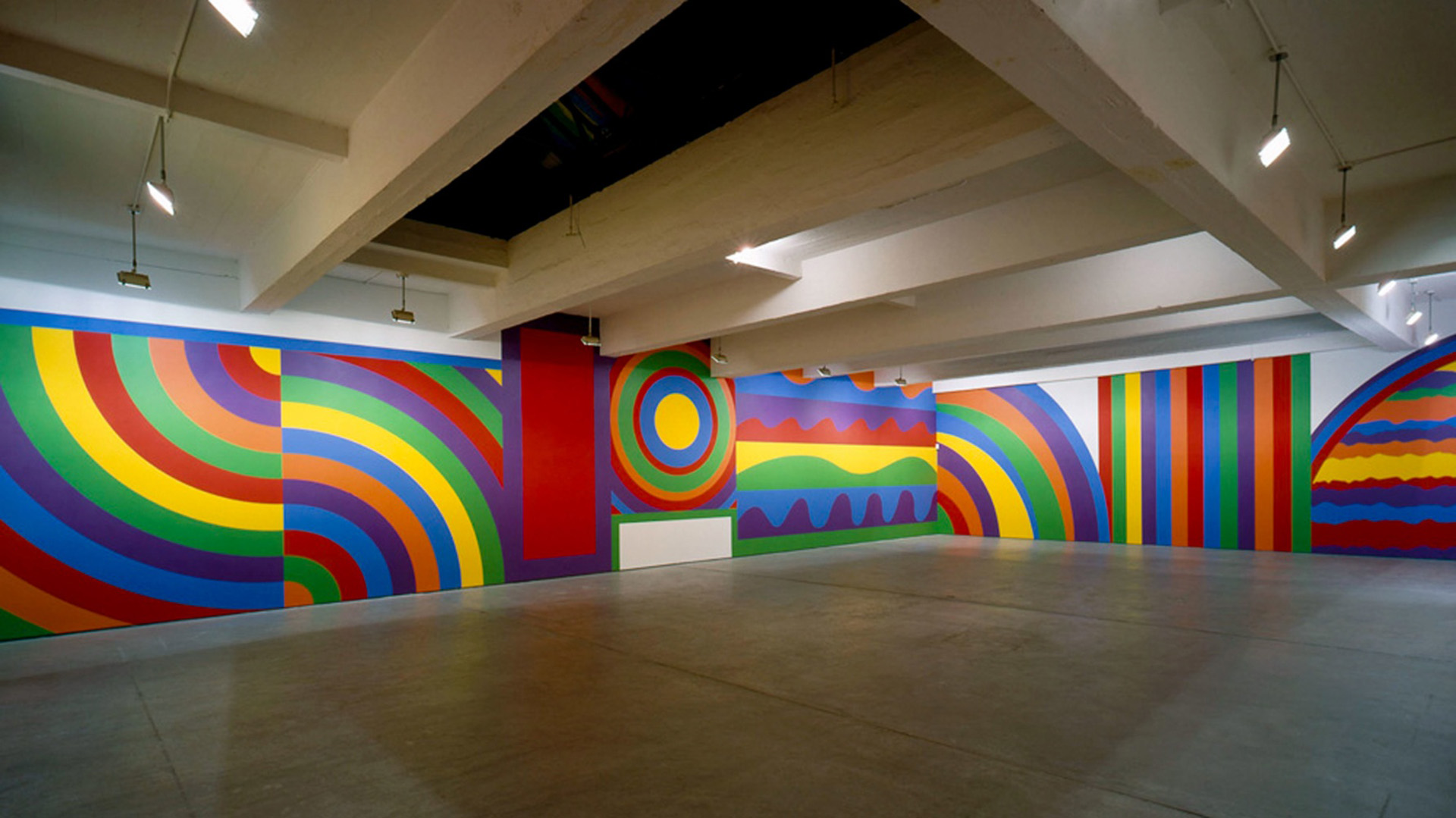Blog
* The City Within Me
26 October 2024 Sat
* This article was originally published in the exhibition catalogue Doug Aitken: Naked City.
KUMRU EREN, D.A.
August 2024

DR. KUMRU EREN
Manager of Borusan Contemporary
You won’t find a new country, won’t find another shore.
This city will always pursue you.
You’ll walk the same streets, grow old
in the same neighborhoods, turn gray in the same houses.
You’ll always end up in this city. Don’t hope for things elsewhere:
there’s no ship for you, there’s no road.
Now that you’ve wasted your life here, in this small corner,
you’ve destroyed it everywhere in the world.
—C. P. Cavafy 1
When was the first time you felt you had consumed all of the earth? Was it the moment when you touched a key on your keyboard and, with that mechanical stimulus and the electrical current that followed, imagined the entire world being enveloped by fiber optic cables stretching for miles, like capillaries? Or was it when you clicked “send,” the envelope icon’s a seconds-long odyssey to a satellite orbiting the earth? Perhaps it was the filtered digital charms of social media images, burnishing all the landscapes in the world, reducing them to mere reflections of each other? Or the synthetic, hormonal aesthetic of AI-generated landscapes of unknown corners of the world?
Indeed, when did humanity consume the earth, anyway?
The poet Cavafy drew a map of Hellenic culture and language throughout his life spent between Istanbul, Alexandria, and London, and the “voice of humanity’s personal history” 2 echoed through his poetry between two world wars. He was a true nomad, traversing cities and cultures. Now, his poetry floats like a whisper among different times and native languages. As a salute from the great poet Cavafy to another existential archaeologist wandering between cities and experiences -through Istanbul- where his art is being exhibited comprehensively for the first time, Doug Aitken’s Naked City rises in an ancient corner by the Bosphorus. Exploring contemporary discourse on individuality and freedom, pushing the boundaries of art practice, and provoking the audience to the limits of consciousness, multimedia artist Doug Aitken’s first solo exhibition in Türkiye, Naked City at Borusan Contemporary, is an attempt to investigate the personal history of humanity and the human condition today. A contemporary monograph that brings together the artist’s works from 2006 to 2024, this exhibition also includes a wall piece from the Borusan Contemporary Art Collection, don’t think twice II(2006), which references time and cyclicality, as well as his kinetic sculpture Ascending Staircase(2024), specially commissioned for the collection. Situated at the entrance of Yusuf Ziya Pasha Mansion –the Haunted Mansion– an edifice that has quietly risen by the Bosphorus since the early 20th century, this kinetic sculpture converts the architecture by dividing it into reflections, a permanent endeavor to intervene in the space. It deconstructs the monumental modernism of the building through mirrors. Divided into discrete sequences, the architecture constructs an anachronistic narrative with the lives that the Yusuf Ziya Pasha Mansion has witnessed throughout its history. Like the haunting city of Cavafy, it revolves and repeats, multiplying despite fragmentation. The Ascending Staircase transforms the Haunted Mansion into a giant kaleidoscope that reveals different epochs of the city.
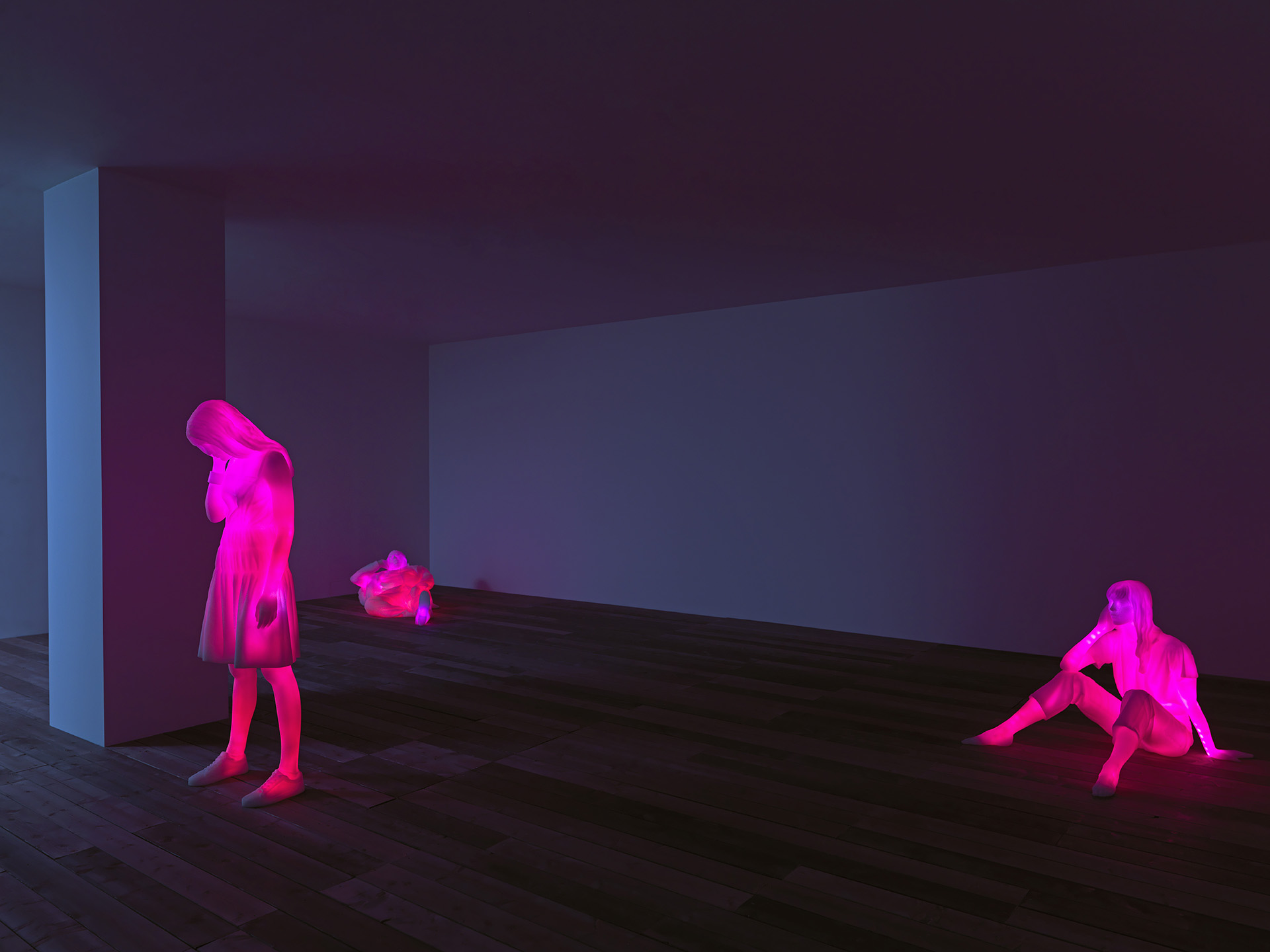
Doug Aitken, 3 Modern Figures (don’t forget to breathe), 2018.
Installation view, © Doug Aitken, Courtesy of the artist and Faurschou Foundation;
303 Gallery, New York; Galerie Eva Presenhuber, Zurich; Victoria Miro, London; and Regen Projects, Los Angeles.
Photo: Hadiye Cangökçe.
Both 3 Modern Figures (don’t forget to breathe) (2018), which references the triptych compositions in art history and ironically frames the canonization of technology in today’s world, where cell phones have almost turned into a prosthesis of the human body, and Flags and Debris (2021), which combines the abandoned landscapes and deserted cities of the pandemic world with dance—one of the oldest arts known to human beings—and turns them into a ritualistic performance, make visible and expose the ghost of the “other” living among the urban crowd invisibly, through the movement of a shrouded silhouette. Roland Barthes once said that “the hiding must be seen.” Here, he implies that what is concealed should be both known and unknown;
he points out that in Ancient Roman theater, actors would appear on stage wearing masks, point to their masks, and proclaim, “Larvatus prodeo: I advance pointing to my mask.” 3 Elsewhere, he elaborates: “In the West at least, there is no art which does not point to its own mask.” 4 sleepwalkers (2007), Aitken’s site-specific installation at Borusan Contemporary, condenses the transformation of modern urbanites into archetypes and of lives that multiply, fragment, and become their own representations into an act as individual and solitary as sleep. In Digital Detox (2020), the fabric work produced with daily clothes and other ready-made materials found in the artist’s workshop under pandemic conditions reminds us that art resembles a cocoon while at the same time functioning like a banner against the digital labyrinth in which we lose ourselves—and through the material itself, it makes the viewer feel the “charm upon touch” forgotten during the pandemic. This curation effort, which envisions the works woven in different mediums and chronologies as canonical parts of Aitken’s artistic practice, is based on Jérôme Sans’ linguistic construction, which he calls “introspective” with an elegant wordplay, altering the artist’s introspection into the gaze of the spectator.
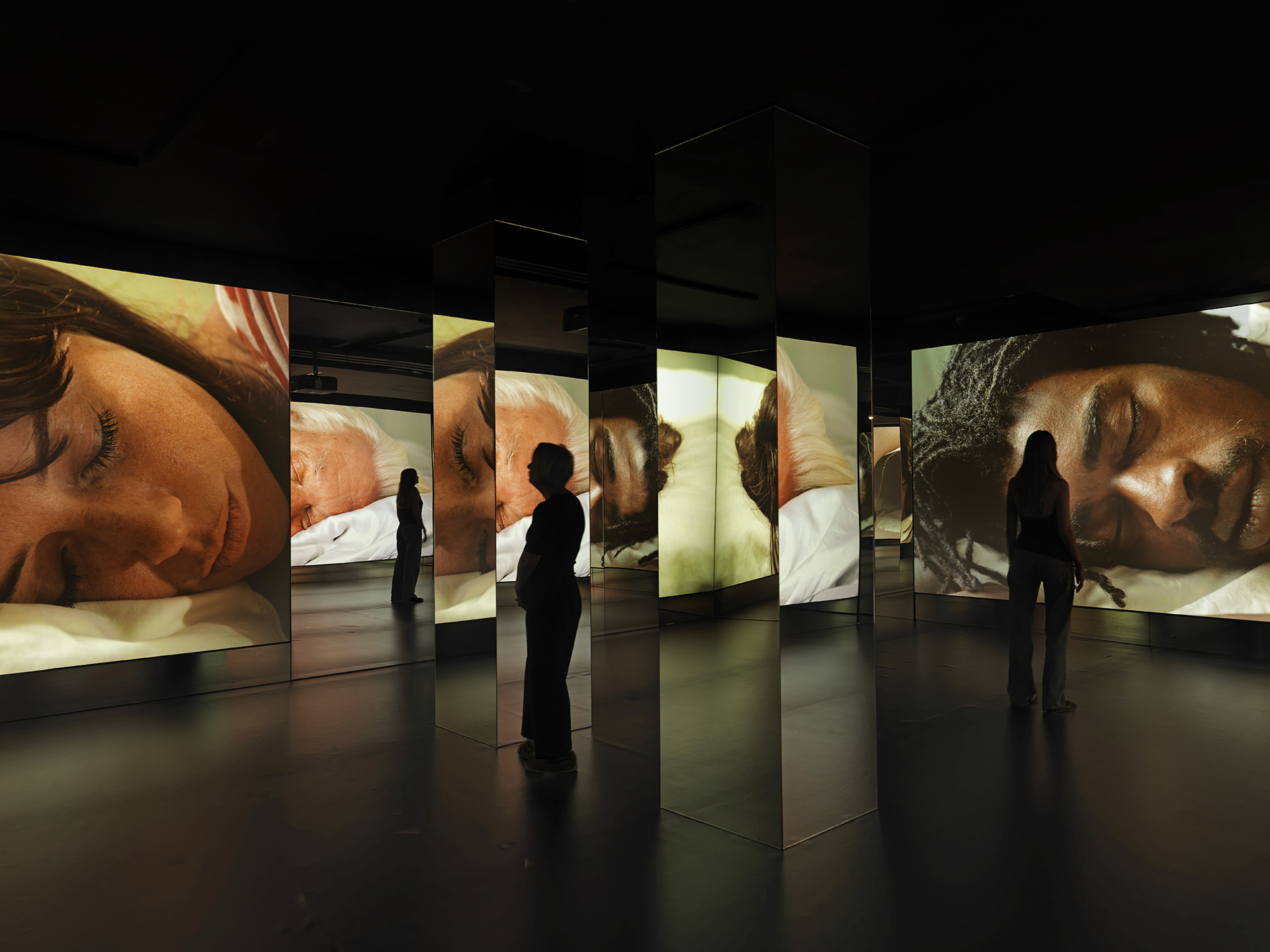
Doug Aitken, sleepwalkers, 2007.
Installation view, © Doug Aitken,Courtesy of the artist;
303 Gallery, New York; Galerie Eva Presenhuber, Zürih; Victoria Miro, Londra; Regen Projects, Los Angeles.
Photo: Hadiye Cangökçe.
With the new millennium, we have witnessed the transformation of human curiosity towards transcendence into an act of acceleration and worship of speed. While making the planet smaller and smaller as the world that fits on the screen grows larger and larger, technology produces individuals who experience nostalgia for a world they know only from postcards—and in their own limitlessness—are condemned to the screens. This contradiction perhaps defines this new human condition: digital nomads who can journey many miles without taking a single step but are subject to infinite control within this infinity. Doug Aitken’s practice examines the present from a future perspective; his art is a pursuit to analyze the present and decipher the connections. It has become impossible to discuss today’s notions of freedom and individuality outside of the communicative realm created by the digital sphere. In Discipline and Punish (1975) and The History of Sexuality (vol. I in 1976, vol II-III in 1984, vol IV. posthumously in 2018), Michel Foucault, relying on concepts such as “technology of power” and “networks,” points towards a world of computing where individuals are considered “nodes.” While he emphasizes the role of the media in the networks of an individual’s daily life, he anticipates today’s communication space. When Gilles Deleuze discussed digital culture through a conception of a “society of control,” he explained digital language as an instrument of control in itself. 5 As a result, digital culture, which we perceive as freedom, will move in two opposite directions concurrently—toward being controlled and to being freed from it. 6
While considering the sculptural installation in the exhibition, 3 Modern Figures (don’t forget to breathe),
it is impossible not to mention Marshall McLuhan’s text Understanding Media, which addresses media technologies as extensions of humanity and suggests that media tools can be thought of as spatial extensions of human senses or the body itself. 7 The figures in the installation, with each body positioned around this absent prosthesis of a phone, are transformed into the light emanating from it and the flow of information it represents. Although seemingly stationary, they are in a state of flow and movement as if breathlessly frozen within it. The figures are all transparent, devoid of expression and personality; the desire for “universal” knowledge that binds the whole world, as Hegel’s concept of “absolute spirit” would imply, has been replaced in these bodies by the plurality, variability, and circulation of information. “The new types of publicity that have been proliferating over the past decade or two, especially with the electronic media, not only urge us to rethink, once again, the function, scope, and mode of intellectual activity; they also force us to redefine the spatial, territorial, and geopolitical parameters of the public sphere.” 8 Technologies have dramatically altered our relationship with the earth. This relationship, which has become increasingly fragile, has led to anyone being displaced since it began to be conceptualized as deterritorialization, leaving no one with a homeland to return to. 9 “You won’t find a new country, won’t find another shore.”
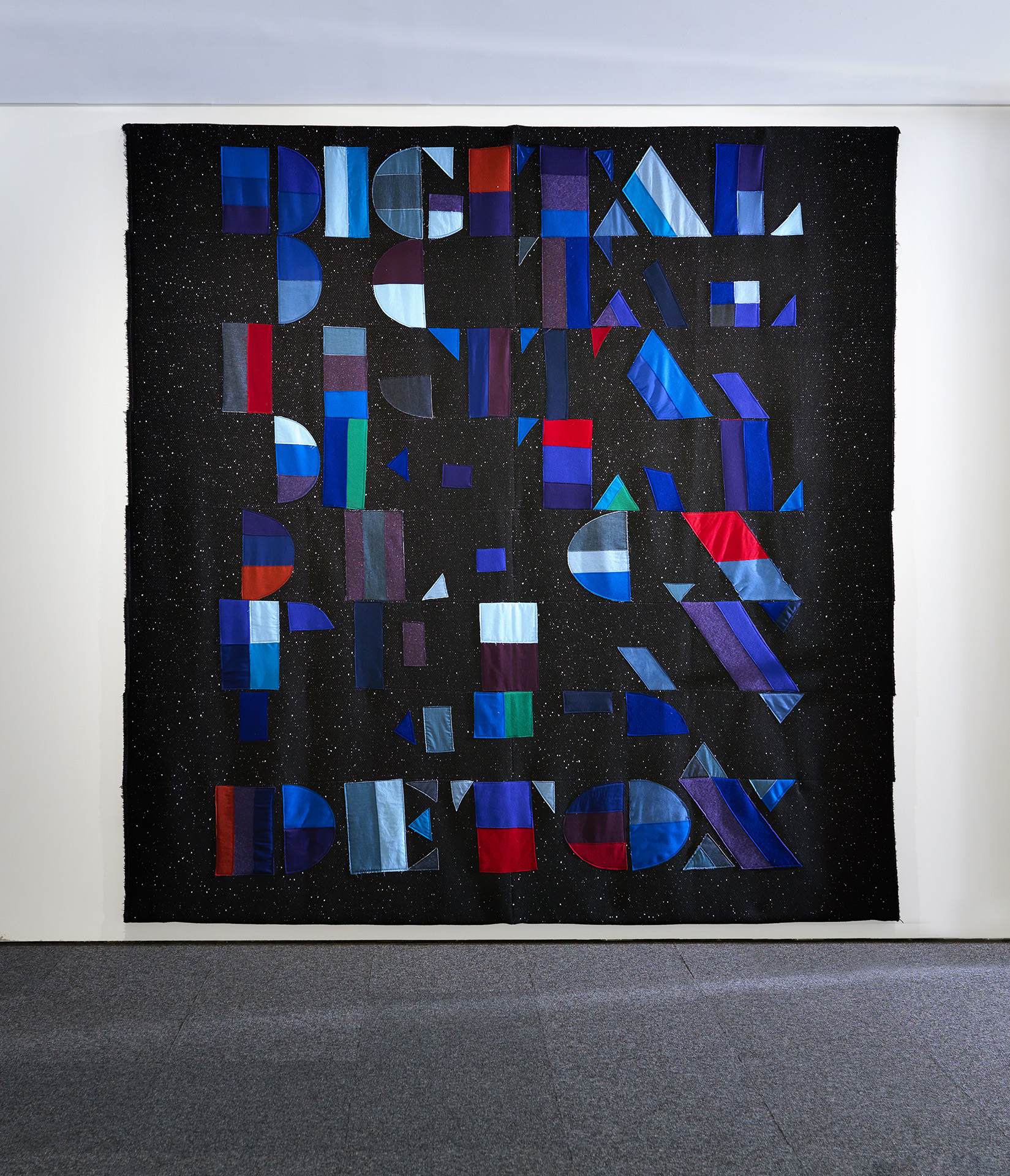
Doug Aitken, Digital Detox, 2020.
© Doug Aitken, Courtesy of the artist;
303 Gallery, New York; Galerie Eva Presenhuber, Zürih; Victoria Miro, Londra; Regen Projects, Los Angeles.
Photo: Hadiye Cangökçe.
Deterritorialization also brought about the severance of space from its temporal relationship. In pre-modern societies, the measurement of time was dependent on its relationship with space. The invention of the mechanical clock changed the global perception of time; the Western time system that emerged with the invention of the clock in medieval Europe transformed all other time systems through its hegemonic development. Time became disconnected from the specificity of locality; in the technoscientific process, acceleration reached a dizzying level, and as temporal distances shrank, spatial boundaries began to blur, and the image of space began to expand. 10 Communication technologies not only abstracted the relationship and limits between place and culture but also caused a re-evaluation of the boundaries related to the body. “Locality” is no longer the same as it was when information was simply carried by bodies from one place to another. 11 The human body has been drawn into networks, databases, and information corridors.
In his interview with Jérôme Sans about the Naked City and his practice in general, Doug Aitken gives a marvelous description of art, carrying his hope on humanity (and art)—alienated from the earth, without a homeland to return to but can still exist outside these corridors of information or a white cube—from deserts, oceans, the summit of the Alps to a historical red-brick building rising silently by the shore of the Bosphorus:
“Art can be like pollen in the wind, like seeds, like water in the ocean. Art can move and drift.”
Humankind might consume the earth one day, but art is just like the smell of the ocean, the heat of the desert, the journey of a speck of pollen floating in the wind, or the century-old whisper of Cavafy...
And wherever you go, Naked City will keep going to follow you on the art’s wings.
1- “The City” from C. P. Cavafy: Collected Poems, trans. Edmund Keeley and Philip Sherrard, Princeton University Press, 1975.
2- Oya Baydar, Sıcak Külleri Kaldı, İstanbul: Can Yayınları, 2000.
3- Roland Barthes, A Lover’s Discourse: Fragments, trans. Richard Howard, London: Vintage Books, 2002.
4- Roland Barthes, “Writing and the Novel,” Writing Degree Zero, trans. Annette Lavers and Colin Smith, New York: Hill and Wang, 1980.
5- Gilles Deleuze, “Postscript on the Societies of Control,” October, Vol. 59, Winter, 1992.
6- Mark Poster, “Foucault, Deleuze, and New Media”, Foucault Across the Disciplines, University of California, Santa Cruz, 2008.
7- Marshall McLuhan, Understanding Media: The Extensions of Man, Cambridge, MA: The MIT Press, 1994.
8- Miriam Hansen, “Foreword”, in Public Sphere and Experience: Toward and Analysis of the Bourgeois and Proletarian Public Sphereby Oskar Negt and Alexander Kluge, London / New York: Verso, 2016.
9- Marshall McLuhan and Quentin Fiore, Medium Is the Massage, Richmond, CA: Gingko Press, 2001.
10- Paul Virilio, Speed and Politics, Cambridge, MA: The MIT Press, 2006.
11- Zygmunt Bauman, Globalization: The Human Consequences, Cambridge / Oxford / Boston / New York: Polity Press, 2017.
ABOUT THE WRITER
Kumru Eren, D.A., has provided consultancy for both national and international collections and institutions, with a particular focus on cultural heritage development, as well as collection and asset management. She received her Doctor of Arts degree with a dissertation on the phenomenon of “Globalization of Contemporary Art in Turkey,” framed through Jean-Luc Nancy’s theories. She has given lectures on critical art theories at Marmara University in İstanbul. Her articles, critiques, and reviews have appeared in exhibition catalogues, artist monographs and cultural publications including Istanbul Art News, Artam, Varlık, Hürriyet Kitap Sanat, and Hürriyet Seyahat. She currently serves as the Artistic and Executive Director of Borusan Contemporary and is a member of AICA Türkiye (International Association of Art Critics – Türkiye), Friends of Ulay Foundation, IACCCA (International Association of Corporate Collections of Contemporary Art), the Baksı Culture and Arts Foundation, the Baksı Platform, and the TOBB Creative Industries Council.

